
Ultimate hot spring getaway to revitalize through nature’s energy
Hoshino Resorts KAI Unzen, Nagasaki Prefecture, is the 22nd property operated by Hoshino Resorts under the hot spring ryokan brand, KAI , Nagasaki Prefecture. KAI Unzen is also the brand's first in Nagasaki Prefecture and fifth facility in Kyushu, following KAI Kirishima in Kagoshima Prefecture and KAI Aso, KAI Beppu, and KAI Yufuin in Oita Prefecture. KAI Unzen stands in a hot spring area notable for Unzen Jigoku also known as the Unzen hell (*1) and features an interior evoking the Nagasaki culture, a mixture of Japanese, Chinese, and Dutch influences. A relaxing time at this hot spring inn can be enjoyed where the culture of Nagasaki resides.
(*1) A fumarolic area that emits white smoke containing water vapor.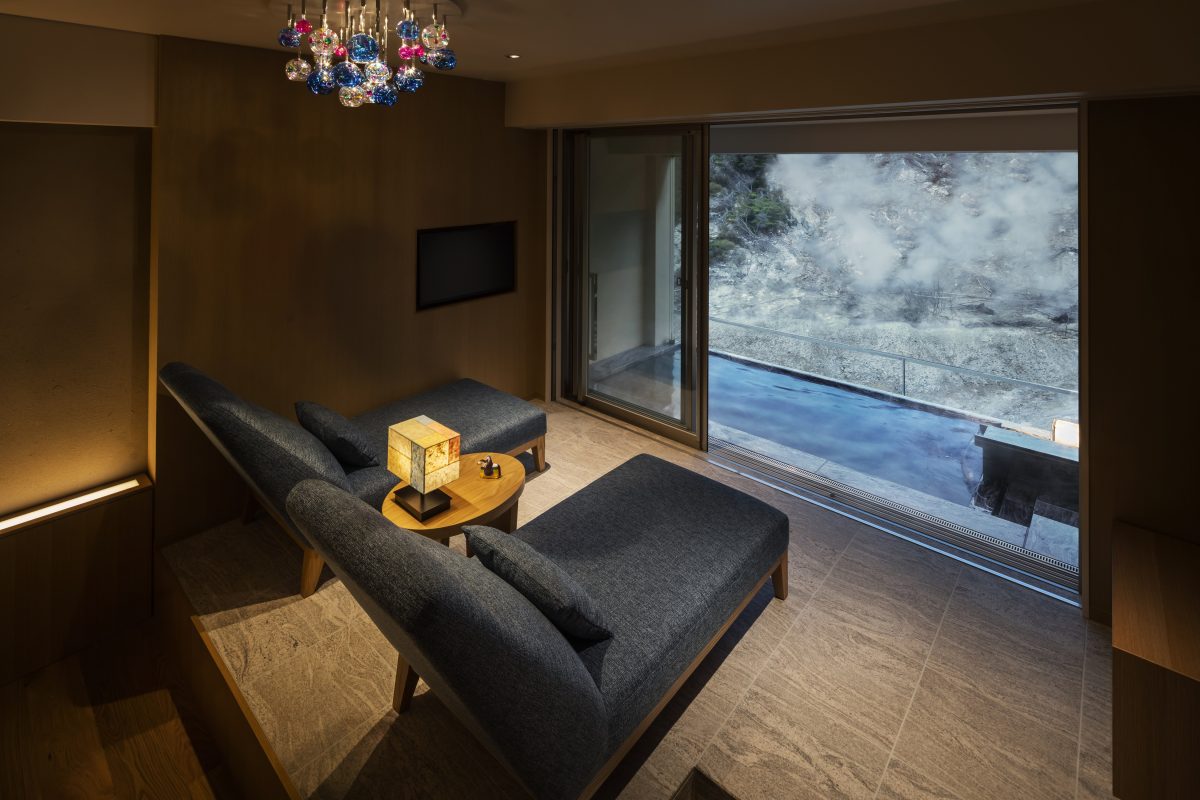
About Unzen Jigoku
Unzen Jigoku (or Unzen Hell) is in Unzen Onsen, Shimabara Peninsula, Nagasaki Prefecture. The Unzen area was designated as Japan's first national park in 1934, and in 2019, the national park was recognized as Japan's first UNESCO World Geopark. Unzen Jigoku is a fumarolic area filled with white smoke and volcanic gases containing water vapor. The scent of sulfur wafts through its surrounding areas. Aside from being used as a hot spring source and fumarole since long ago, it has also acted as a kantsuke, a hot water supply system utilizing natural geothermal heat. It is a hot spring hell closely connected to people's lives and continues to be active today.
About KAI Unzen
Unzen Onsen in Unzen-Amakusa National Park, Nagasaki Prefecture is a hot spring area filled with fumes and steam. KAI Unzen is notable for directly facing Unzen Jigoku, providing a stay experience in close proximity to the earth's energy. To feel the Jigoku power at close proximity, hot spring soaks and morning power walks that utilize Unzen Jigoku will be proposed. In addition, Unzen Onsen has historical ties to foreign countries, and it is said that Dutch trading doctors Kembel and Siebold visited through Dejima during sakoku (period of national isolation). The interior design incorporates elements of Nagasaki culture, a mixture of Japanese, Chinese, and Dutch cultures that have developed as various people and cultures came and went. KAI Unzen is a hot spring ryokan where guests can immerse in Nagasaki's culture while experiencing the earth's energy.
KAI Signature Rooms
KAI signature rooms are unique to the KAI brand, where regional culture can be appreciated from within the guest rooms. All 51 guest rooms at this ryokan are KAI Signature Rooms with elements of Nagasaki culture. For example, the standing light was inspired by stained glass introduced from Holland where the vivid red and blue hues are expressed by Japan's traditional washi paper. Hasemi Yakiyaki, a pottery from Nagasaki, and the Koga Ningyo, a colorful clay figure from Nagasaki are also decorated in the rooms.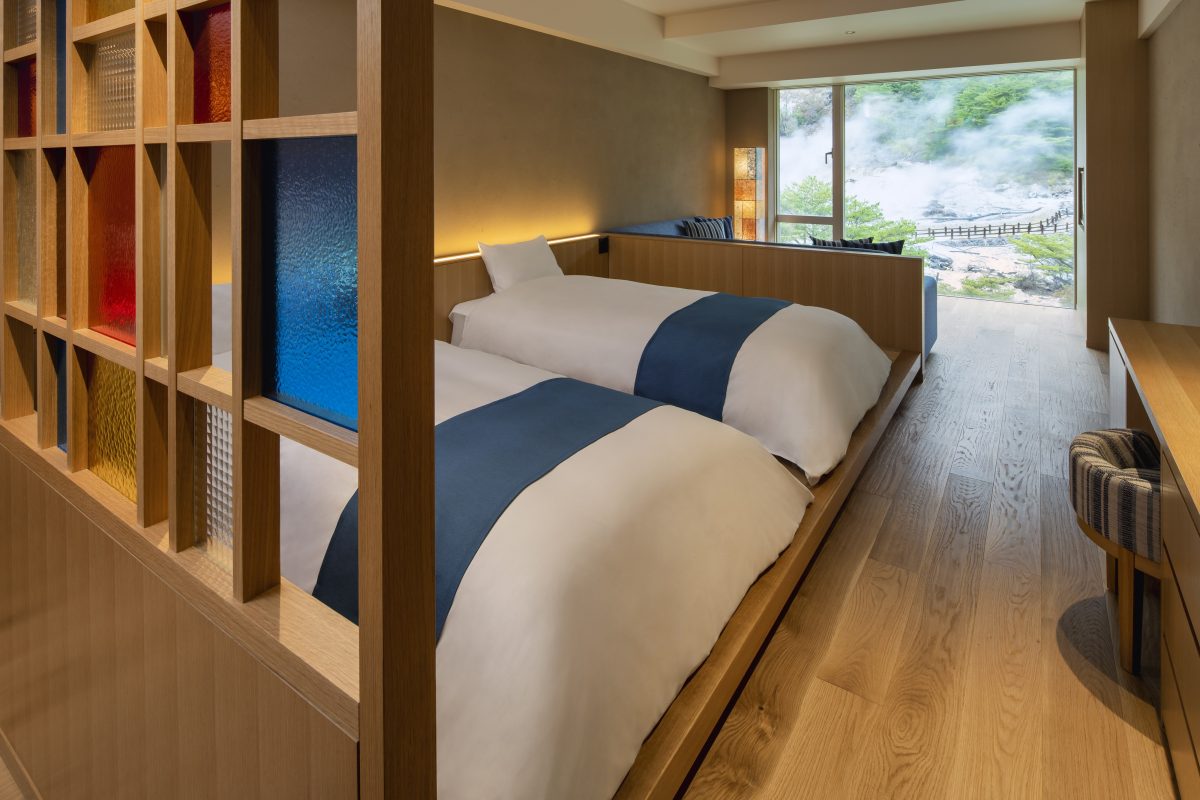
Out of the 51 guest rooms, 16 of them have private outdoor baths. In these room types, more than half of the rooms' space is the open-air bath and in the hopes of a full hot spring experience, the living room space was intentionally replaced with an after-bath area. Guests can enjoy alternating between bathing and resting at all times. After a heavenly soak in the bath, guests can relax and gaze into the outside views of Unzen Jigoku from their after-bath area. 
KAI Local Flavors – Kaiseki course meal using local ingredients
Enjoy a full-course kaiseki dinner that takes full advantage of the local food culture in a semi-private dining room. Dinner at KAI Unzen starts with an appetizer of Japanese braised pork belly rillettes, a staple in Shippoku cuisine (*3). Together with the rillettes, relish in Unzen Onsen's specialty yusenpei (*4) baked with hot spring water. Next, indulge in an assortment of vinegared vegetables, appetizers, and sashimi served in a bright vermilion bowl reminiscent of the round table of Shippoku cuisine. 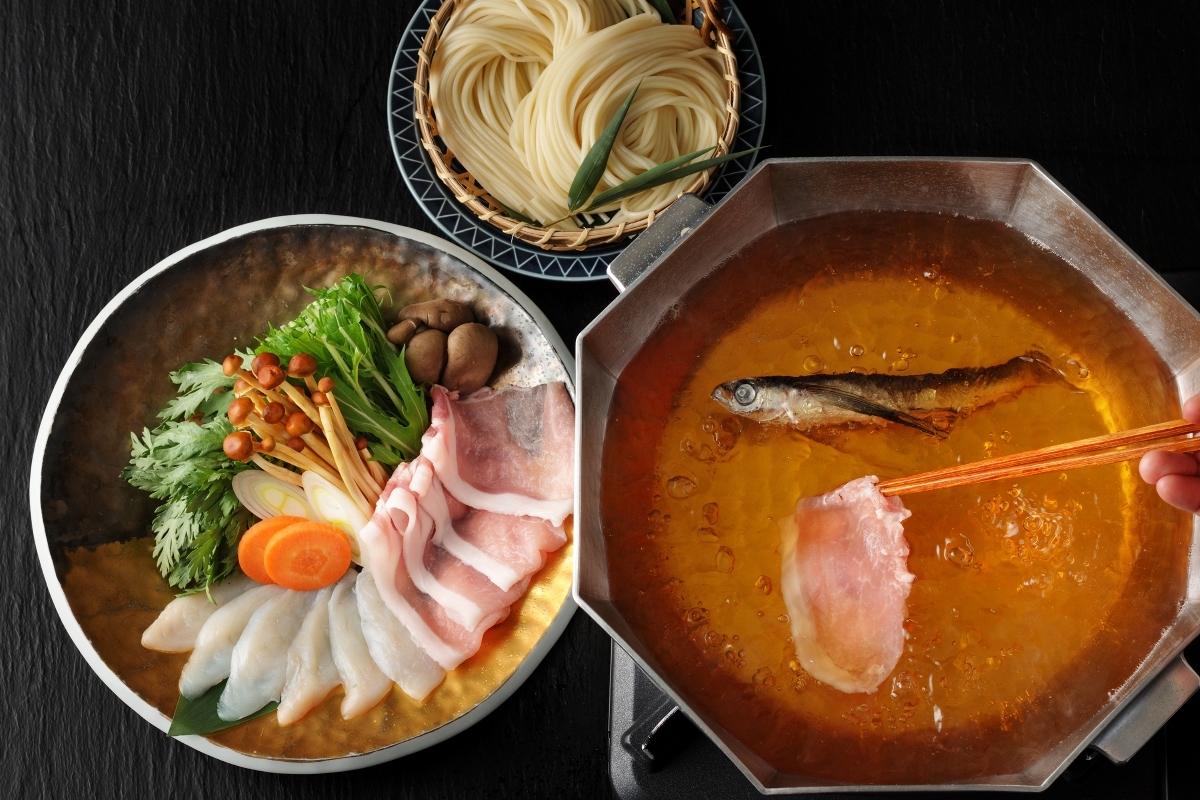
The main dish for the Special kaiseki course is shabu-shabu (hot pot) of dashi broth from flying fish. Flying fish is a beloved ingredient in Nagasaki Prefecture. Savor this shabu-shabu by passing pork and fugu into hot, umami-filled dashi. Adding yubeshi, a seasoning made by boiling yuzu citrus peel with soy sauce, sugar, and pepper, halfway through shabu-shabu is highly recommended to give it a different taste to the dish. Not a drop of the broth would want to be wasted after one bite so to finish it off, local noodles will be served. The abundant ingredients of Nagasaki are prepared and served on beautiful and vivid dishes for both the appetite and the visual to be satisfied.
(*3) Banquet cuisine originating from Nagasaki that reflects influences of Japanese, Chinese and Dutch cultures. Course dishes are served on a large platter and placed on a round table.
(*4) One of Uzen's most famous baked goods. It is made by kneading flour, eggs, sugar, and hot spring water into dough and baking it.
Hot springs: A large bath decorated with stained glass
The public hot springs are decorated with stained glass, a glass craft from Holland. When the morning sun enters, the colorful and vivid light reflects onto the water and the entire indoor bath glistens. The acidic spring water contains iron and sulfur from the Unzen Jigoku and is characterized by its cloudy color. There are two indoor baths, the “Atsuyu” (hot water), which flows directly from the source, and the “Nuruyu” (warm water), which calms the mind and body with its gentle warmth. Loosen the mind and body as one is enveloped by sulfur-scented steam. 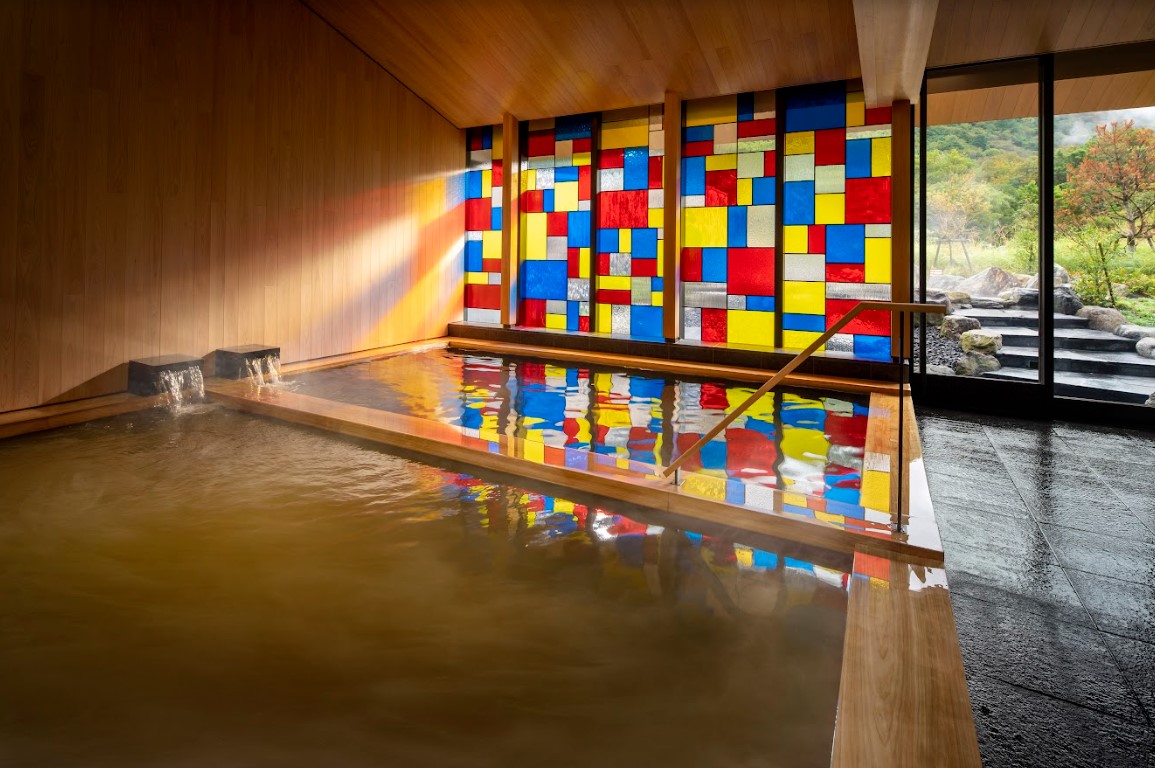
KAI Cultural Discovery - Letterpress Printing
The KAI Cultural Discovery program is one of the many ways the KAI brand welcomes guests to experience the area's local culture. KAI Unzen's Cultural Discovery is a letterpress printing experience that will show the charms of unevenness. Letterpress printing was brought from Europe to the Shimabara Peninsula in Nagasaki Prefecture by four Tensho envoys. After learning about the roots of letterpress printing, guests can select alphabet, hiragana, and kanji characters of various typefaces and carefully position them. Lastly, the text can be printed onto a card using a letterpress machine. The joys of printing can be felt through the decision-making of the texture of the letters by adjusting the force applied when printing. This Cultural Discovery takes place in a space specifically designed for letterpress printing. The walls have "Unzen" and other texts in large typeface motifs and authentic typefaces scattered all over, expressing the fun of finding unique typefaces in letterpress printing.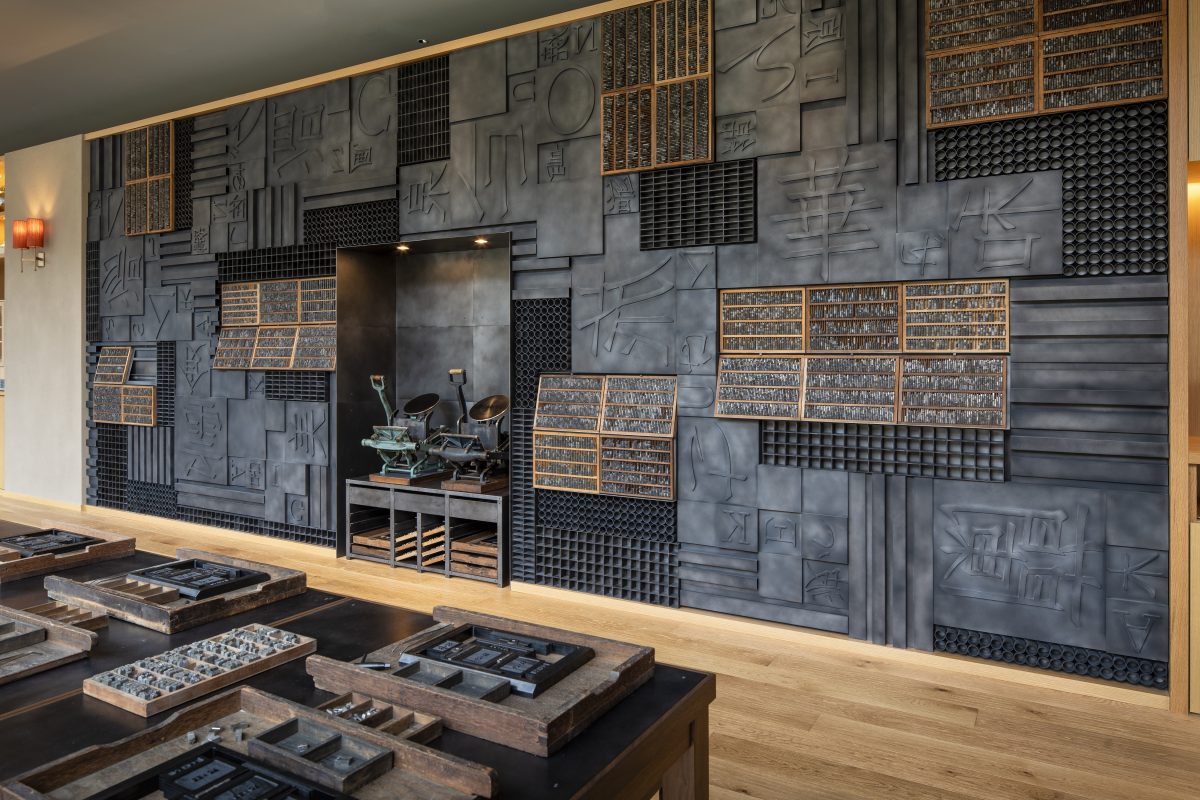
Activity: Unzen Jigoku Power Walk
The Unzen Jigoku Power Walk is a walk around Unzen Jigoku amid the clear morning air. Go on a brisk walk using the whole body while taking deep breaths and energizing the body as one feels the fumes and steam. At the end of the walk, lie down at the plaza of the Kyuhachiman Jigoku and perform stretches to loosen any tension in the body. The Kyuhachiman Jigoku is an inactive hot spring hell, where its lingering geothermal heat makes the ground hot to touch, allowing one to feel the land's energy. Experience the power and energy of the earth of the Unzen Jigoku with the whole body. 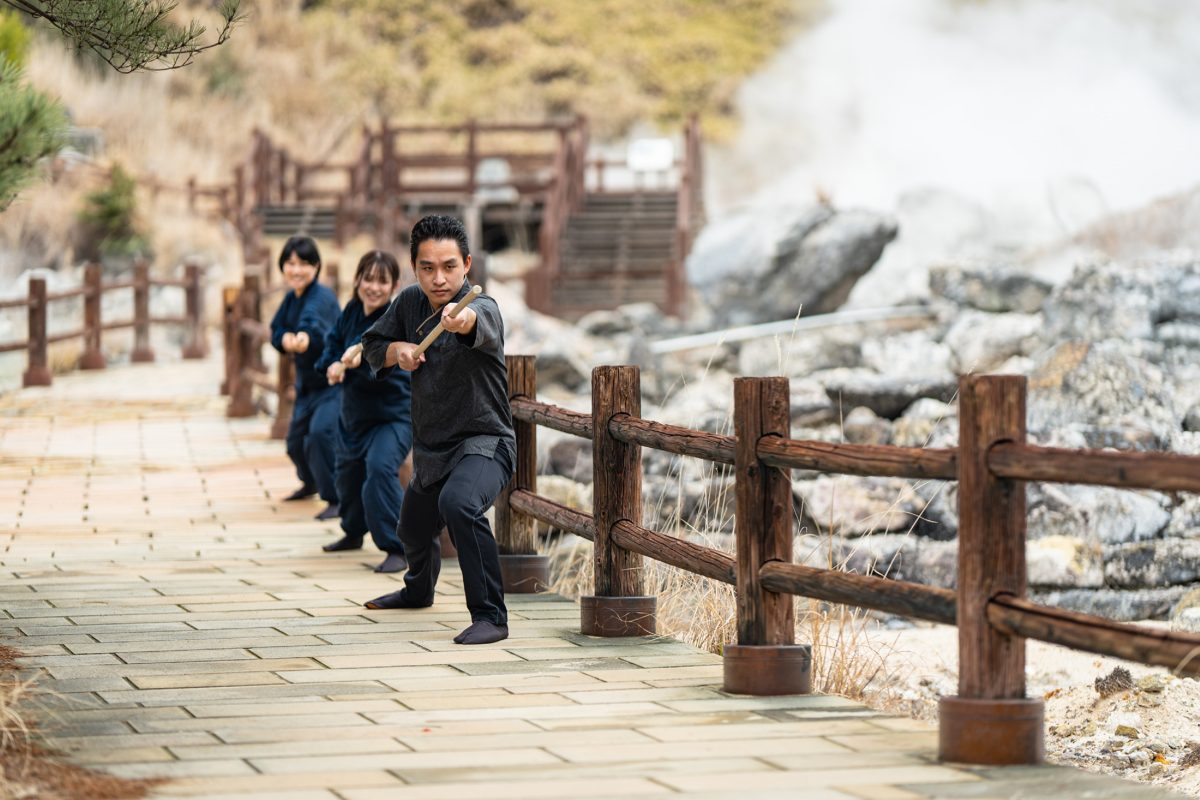
Initiatives Utilizing Geothermal Energy at KAI Unzen
KAI Unzen uses a heating system, called kantsuke, to warm up regular and hot spring water, and for the building's air conditioning. KAI Unzen's unique initiative effectively utilizes the previously under-used geothermal heat directly under it and takes advantage of its proximity to Unzen Jigoku. It also incorporates a system that uses the generated heat from air conditioning and heating of the water, which then feeds the cooled heat into a heat pump to create new heat. This initiative provides energy without using fossil fuels, resulting in zero carbon dioxide emissions. KAI Unzen aims to utilize this initiative to achieve a self-sufficiency ratio of more than 50% in natural energy.
Overview of KAI Unzen
Address: 321 Obama-cho Unzen, Unzen-shi, Nagasaki
Number of Rooms: 51
Facilities: Lobby, Dining, Travel Library, Shop, Public hot springs, Yuagari Lounge
Starting Room Rate: Starting from 25,000 JPY per night (per person for a 2-person room, includes tax, service charge, breakfast, and dinner)
Directions: 60 minutes by car from JR Isahaya Station and about an hour and a half by car from Nagasaki Airport
About KAI Brand
Onsen Ryokan loved by local and overseas travelers
KAI is a leading brand of onsen ryokan where every establishment offers a contemporary take on traditional Japanese inn whilst keeping Western comforts. KAI invites one to discover the multifaceted aspects of Japan through natural hot springs, exploration of local arts and entertainment, and classic Kaiseki-style course meals using local and seasonal flavors. Experience Washoku, Japanese cuisine, presented on carefully selected ceramics for full exposure to culinary sensations.
About Hoshino Resorts
Hoshino Resorts was first established as a Japanese inn/ryokan in 1914 in Karuizawa in Nagano Prefecture before it began the operation of other resorts in Japan. Today, it has evolved into a highly influential hotel management company and is run by 4th-generation family member Yoshiharu Hoshino. Providing a unique experience focused on the local charms of each destination and a high level of omotenashi, Japanese-style hospitality, the company has expanded rapidly out of Karuizawa since 2001 and now operates more than 55 accommodations both in and outside Japan with one of the following categories: luxury hotel brand "HOSHINOYA," hot spring ryokan brand "KAI," countryside resort hotel brand "RISONARE," city tourism hotel brand "OMO," free-spirited hotel brand "BEB," mountain hotel brand “LUCY,” or other unique lodgings.